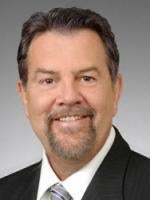In April 2020, the Department of Health and Human Services (HHS) revealed a plan to disperse $175 billion in funding for health care providers allocated by the Coronavirus Aid, Relief, and Economic Security (CARES) Act and subsequent federal relief bills. The Department titled the $175 billion the “Provider Relief Fund,” and almost immediately after CARES was signed into law, providers’ relief about potential economic stimulus was curbed by their confusion over how the Provider Relief Fund would be administered.
In particular, providers have questioned how to calculate the numbers necessary for their application to receive funds, how to apply if they have undergone a change in ownership and, importantly, what steps to take if a provider receives a potential overpayment.
These concerns are especially important given the potential for False Claims Act (FCA) liability resulting from misuse of federal funds. However, whether the Provider Relief Fund will lead to FCA enforcement is unclear.
HHS has not promulgated regulations governing distribution of the Provider Relief Fund and has instead issued sub-regulatory guidance in the form of FAQs and statements on its website. This fact has serious implications with regard to whether the government will bring FCA claims against providers related to CARES funds. In 2018, then Associate Attorney General Rachel Brand issued a memorandum (the Brand Memo) directing Department of Justice (DOJ) attorneys against basing FCA enforcement on violations of sub-regulatory guidance. Although the reach and scope of the Brand Memo are still not fully understood, its existence may serve as a defense in the event that a qui tam or government action is threatened.
Of greater concern is the fact that providers that accept money via the Provider Relief Fund must attest to the accuracy of their application and their use of funds. This attestation could provide the government with a clearer avenue for FCA enforcement. Additionally, HHS could seek to offset or otherwise recover funds for incorrect payments outside of the FCA.
While the future is unclear, providers are well advised to take protective steps against potential future FCA allegations. Foley attorneys provide the following overview of the Provider Relief Fund, FCA exposure, and disclosure opportunities as a road map for institutions interested in minimizing FCA risk under the Provider Relief Fund program.
The Provider Relief Fund
HHS allocated the Provider Relief Fund into multiple distributions. The “General Distribution” includes $50 billion for providers based on share of 2018 net patient revenue, and was distributed in two separate tranches. Approximately $52.5 billion comprises the “Targeted Distribution,” which HHS has directed to different types of providers, including skilled nursing facilities; tribal hospitals, clinics, and urban health centers; rural providers; Medicaid and CHIP providers; safety net hospitals; and hospitals in areas especially affected by the COVID-19 public health emergency (PHE). HHS calls this last distribution the “High Impact Area Fund.”
The Department has issued sub-regulatory guidance primarily in the form of an ever-growing Frequently Asked Questions (FAQ) document. While this document is invaluable because it is one of the few pieces of guidance on this complicated program, it has caused confusion for many providers.
For instance, HHS periodically updates the FAQ document and indicates the date that a question was added or modified in parentheticals. However, if HHS modifies an answer, there is no record of the prior guidance on the website unless a provider saves the previous version of the FAQ document locally. Consequently, providers may be relying on guidance one day and learn the next that the guidance has changed – with no ready way to document the prior guidance upon which they relied. In some cases, guidance has come out after key deadlines have passed.
Providers have also been faced with questions about the calculation of the payments they receive, with few options for raising these concerns. In some cases, providers receive funds directly based on reports submitted previously, and in others they are required to submit additional reports to receive funds. In both cases, Foley clients have reported uncertainty about the amount of funds they received, including concerns that the data relied on was incomplete or that providers did not receive funds for which they were eligible. No appeals processes have been made available by HHS.
Another cause of concern is that some of HHS’s guidance pertains to only one of the distributions. For instance, some guidance is specific to funds distributed under the “General Distribution” and other questions address the specific pools of funding in the “Targeted Distribution.” This has left many providers wondering, for example, whether they can rely on guidance about the “General Distribution” when applying similar reasoning to the High Impact Area Fund. Additionally, HHS contracts with UnitedHealth Group to administer the Provider Relief Fund, and directs providers to contact UnitedHealth with all questions. However, providers may receive different, and at times even contradictory, guidance from different UnitedHealth representatives, causing further headaches and uncertainty.
Foley Advice and the Implications of Disclosure
Providers across the country are anxious to take advantage of money received via the Provider Relief Fund but many are cautious due to the lack of clear guidance. Moreover, providers are facing unique challenges during the COVID-19 PHE and their issues may differ based on whether a provider receives funds via the “General Distribution” or one of the “Targeted Distribution” allocations. Namely, the terms and conditions to which providers must attest differ based on the distribution, and providers must submit different data for the “Targeted Distribution” allocations and “General Distribution” funds.
Foley lawyers have attempted to address these concerns with their clients. For example, Foley has counseled High Impact Area clients that applied for and received funds based on the limited guidance that existed at the time of application. Some weeks later, after HHS released updated guidance that appeared to contradict or substantially alter the applicable rules, the providers became concerned that they may have miscalculated some of the numbers required for their application. Foley has counseled these clients to maintain detailed and careful records of their reasoning and the facts available to them at the time of their application, and even to notify the government of their actions to demonstrate transparency and forestall FCA allegations.
While other components within HHS and other agencies have clear processes for disclosing potential overpayments relating to specific funding sources or violations, this is not the case with HHS’ Provider Relief Fund, likely because of the urgency with which the Department acted in responding to the economic crisis caused by the COVID-19 PHE.
Despite the wealth of guidance relating to other disclosure protocols, providers have been left in a no-mans-land when navigating the Provider Relief Fund and the implications of a self-identified overpayment. Importantly, the decision regarding disclosure is critical because of potential FCA liability. Consequently, providers should think seriously about the potential implications of disclosure when assessing their concerns related to the Provider Relief Fund.
Should Your Institution Disclose?
Given the lack of a clear repayment protocol, providers are left with important choices related to if and how they want to disclose a potential overpayment. This decision is complicated by the fact that HHS’s changing guidance makes it unclear what constitutes an overpayment.
Providers may choose to disclose “quietly” by simply repaying the money. However, this option may be unattractive because HHS has issued guidance directing providers to reject all funds if they suspect an overpayment, rather than just those funds that constitute the overpayment. Needless to say, since it is not at all clear when a provider would receive a “corrected” payment in the future – and providers frequently need these funds desperately to cover the costs of the pandemic – returning the entire payment is not a very attractive or viable option. Some providers have considered repaying only the “overpayment” portion of the funds notwithstanding HHS guidance.
Alternatively, providers may choose to disclose via notice to the government. This route may appeal to providers for a few reasons. Disclosure could preserve a government knowledge defense to a FCA allegation, allowing the provider subsequently to argue that the overpayment was not material because the government was on notice but failed to seek an overpayment recovery. Additionally, depending on how a provider goes about disclosing, notice may protect against a qui tam action due to the public disclosure bar, which prohibits a relator from bringing a FCA action based on information that has already been disclosed to the public.
However, what should be disclosed to the government, to whom disclosure should be made, and what means of disclosure should be employed are outstanding questions and each provider’s decision will differ based on their circumstances. Despite the confusion – or perhaps because of it – providers should document all decision-making and supporting materials, including the HHS guidance the provider relied on when applying for and subsequently using CARES funds.
The Provider Relief Fund is a complex program and this article only begins to describe the factors that providers should consider when applying for funds, using funds, or reporting a potential error. Because of this, providers should consult with counsel when appropriate.






 />i
/>i

